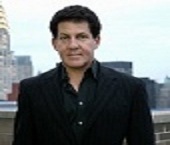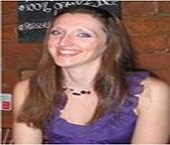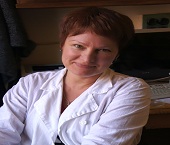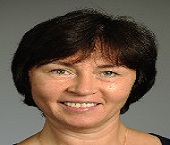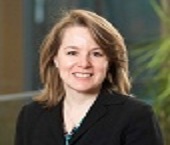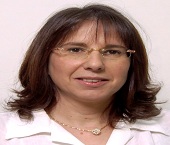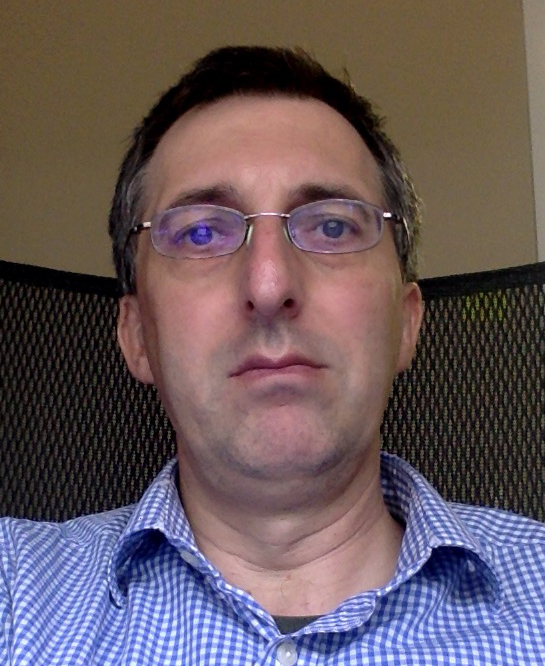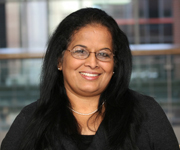Theme: Explore and Exploit the Novel Techniques in Cell and Stem Cell Research
Stem Cell Research 2017
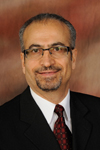
On behalf of the organizing committee, it is my distinct pleasure to invite you to attend the Stem Cell Congress-2017. After the success of the Cell Science-2011, 2012, 2013, 2014, 2015, Conference series LLC Ltd is proud to announce the 8th World Congress and expo on Cell & Stem Cell Research (Stem Cell Congress-2017) which is going to be held during March 20-22, 2017, Orlando, Florida, USA. The theme of Stem Cell Congress-2017 is “Explore and Exploit the Novel Techniques in Cell and Stem Cell Research”.
This annual Cell Science conference brings together domain experts, researchers, clinicians, industry representatives, postdoctoral fellows and students from around the world, providing them with the opportunity to report, share, and discuss scientific questions, achievements, and challenges in the field.
Examples of the diverse cell science and stem cell topics that will be covered in this comprehensive conference include Cell differentiation and development, Cell metabolism, Tissue engineering and regenerative medicine, Stem cell therapy, Cell and gene therapy, Novel stem cell technologies, Stem cell and cancer biology, Stem cell treatment, Tendency in cell biology of aging and Apoptosis and cancer disease, Drugs and clinical developments. The meeting will focus on basic cell mechanism studies, clinical research advances, and recent breakthroughs in cell and stem cell research. With the support of many emerging technologies, dramatic progress has been made in these areas. In Stem Cell Congress-2017, you will be able to share experiences and research results, discuss challenges encountered and solutions adopted and have opportunities to establish productive new academic and industry research collaborations.
In association with the Stem Cell Congress-2017 conference, we will invite those selected to present at the meeting to publish a manuscript from their talk in the journal Cell Science with a significantly discounted publication charge. Please join us in Philadelphia for an exciting all-encompassing annual Stem Cell get together with the theme of better understanding from basic cell mechanisms to latest Stem Cell breakthroughs!

Haval Shirwan, Ph.D.
Executive Editor, Journal of Clinical & Cellular Immunology
Dr. Michael and Joan Hamilton Endowed Chair in Autoimmune Disease
Professor, Department of Microbiology and Immunology
Director, Molecular Immunomodulation Program, Institute for Cellular Therapeutics,
University of Louisville, Louisville, KY
Track 01: Stem Cells
The most well-established and widely used stem cell treatment is the transplantation of blood stem cells to treat diseases and conditions of the blood and immune system, or to restore the blood system after treatments for specific cancers. Since the 1970s, skin stem cells have been used to grow skin grafts for patients with severe burns on very large areas of the body. Only a few clinical centers are able to carry out this treatment and it is usually reserved for patients with life-threatening burns. It is also not a perfect solution: the new skin has no hair follicles or sweat glands. Research aimed at improving the technique is ongoing.
Related Stem Cell Conferences | Stem Cell Congress | Cell and Stem Cell Conferences | ConferenceSeries LLC Ltd
7th Annual Conference on Stem Cell and Regenerative Medicine Aug 4-5, 2016, Manchester, UK; 2nd International Conference on Antibodies July 14-15, 2016 Philadelphia, USA; 2nd International Conference on Innate Immunity July 21-22, 2016 Berlin, Germany; 2nd International Congress on Neuroimmunology March 31-April 02, 2016 Atlanta, USA; International Conference on Cancer Immunology July 28-30, 2016 Melbourne, Australia; 5th International Conference on Immunology October 24-26, 2016 Chicago, USA; Cancer Vaccines: Targeting Cancer Genes for Immunotherapy, Mar 6–10 2016, Whistler, Canada; Systems Immunology: From Molecular Networks to Human Biology, Jan 10–14 2016, Big Sky, USA; Novel Immunotherapeutics Summit, Jan 25–26 2016, San Diego, USA; Stromal Cells in Immunity, Feb 7–11 2016, Keystone, USA; 26th European Congress of Clinical Microbiology, April 9–12 2016, Istanbul, Turkey
Track 02: Stem Cell Banking:
Stem Cell Banking is a facility that preserves stem cells derived from amniotic fluid for future use. Stem cell samples in private or family banks are preserved precisely for use by the individual person from whom such cells have been collected and the banking costs are paid by such person. The sample can later be retrieved only by that individual and for the use by such individual or, in many cases, by his or her first-degree blood relatives.
Related Stem Cell Conferences | Stem Cell Congress | Cell and Stem Cell Conferences | ConferenceSeries LLC Ltd
8th World Congress on Stem Cell Research March 20-22, 2017 Orlando, USAInternational Conference on Cancer Immunology July 28-30, 2016 Melbourne, Australia; 5th International Conference on Immunology October 24-26, 2016 Chicago, USA; Cancer Vaccines: Targeting Cancer Genes for Immunotherapy, Mar 6–10 2016, Whistler, Canada; Systems Immunology: From Molecular Networks to Human Biology, Jan 10–14 2016, Big Sky, USA; Novel Immunotherapeutics Summit, Jan 25–26 2016, San Diego, USA; Stromal Cells in Immunity, Feb 7–11 2016, Keystone, USA; 26th European Congress of Clinical Microbiology, April 9–12 2016, Istanbul, Turkey
Track 03: Stem Cell Therapy:
Autologous cells are obtained from one's own body, just as one may bank his or her own blood for elective surgical procedures. Adult stem cells are frequently used in medical therapies, for example in bone marrow transplantation. Human embryonic stem cells may be grown in vivo and stimulated to produce pancreatic β-cells and later transplanted to the patient. Its success depends on response of the patient’s immune system and ability of the transplanted cells to proliferate, differentiate and integrate with the target tissue.
Related Stem Cell Conferences | Stem Cell Congress | Cell and Stem Cell Conferences | ConferenceSeries LLC Ltd
4th International Conference on Plant Genomics July 14-15, 2016 Brisbane, Australia; 8th World Congress on Stem Cell Research March 20-22, 2017 Orlando, USA; 7th Annual Conference on Stem Cell and Regenerative Medicine Aug 4-5, 2016, Manchester, UK; 2nd International Conference on Tissue preservation and Biobanking September 12-13, 2016 Philadelphia, USA, USA; World Congress on Human Genetics October 31- November 02, 2016 Valencia, Spain; 12th Euro Biotechnology Congress November 7-9, 2016 Alicante, Spain; 2nd International Conference on Germplasm of Ornamentals, Aug 8-12, 2016, Atlanta, USA; 7th International conference on Crop Science, Aug 14–19 2016, Beijing, China; Plant Epigenetics: From Genotype to Phenotype, Feb 15–19 2016, Taos, USA; Germline Stem Cells Conference, June 19–21 2016, San Francisco, USA; Conference on Water Stress in Plants, 29 May – 3 June 2016, Ormont-Dessus, Switzerland
Track 04: Novel Stem Cell Technologies:
Stem cell technology is a rapidly developing field that combines the efforts of cell biologists, geneticists, and clinicians and offers hope of effective treatment for a variety of malignant and non-malignant diseases. Stem cells are defined as totipotent progenitor cells capable of self-renewal and multilineage differentiation. Stem cells survive well and show stable division in culture, making them ideal targets for in vitro manipulation. Although early research has focused on haematopoietic stem cells, stem cells have also been recognised in other sites. Research into solid tissue stem cells has not made the same progress as that on haematopoietic stem cells.
Related Stem Cell Conferences | Stem Cell Congress | Cell and Stem Cell Conferences | ConferenceSeries LLC Ltd
International Conference on Next Generation Sequencing July 21-22, 2016 Berlin, Germany; 5th International Conference on Computational Systems Biology August 22-23, 2016 Philadelphia, USA; 7th International Conference on Bioinformatics October 27-28, 2016 Chicago, USA; International Conference on Synthetic Biology September 28-30, 2015 Houston, USA; 4th International Conference on Integrative Biology July 18-20, 2016 Berlin, Germany; 1st International Conference on Pharmaceutical Bioinformatics Jan 24–26 2016, Pattaya, Thailand; EMBL Conference: The Epitranscriptome, Apr 20–22 2016, Heidelberg, Germany; 2016 Whole-Cell Modeling Summer School, Apr 3–8 2016, Barcelona, Spain; 3rd International Molecular Pathological Epidemiology, May 12–13 2016, Boston, USA; 5th Drug Formulation Summit, Jan 25–27 2016, Philadelphia, USA
Track 05: Stem Cell Treatment:
Bone marrow transplant is the most extensively used stem-cell treatment, but some treatment derived from umbilical cord blood are also in use. Research is underway to develop various sources for stem cells, and to apply stem-cell treatments for neurodegenerative diseases and conditions, diabetes, heart disease, and other conditions.
Related Stem Cell Conferences | Stem Cell Congress | Cell and Stem Cell Conferences | ConferenceSeries LLC Ltd
7th International Conference on Bioinformatics October 27-28, 2016 Chicago, USA; International Conference on Synthetic Biology September 28-30, 2015 Houston, USA; 7th Annual Conference on Stem Cell and Regenerative Medicine Aug 4-5, 2016, Manchester, UK; 4th International Conference on Integrative Biology July 18-20, 2016 Berlin, Germany; 1st International Conference on Pharmaceutical Bioinformatics Jan 24–26 2016, Pattaya, Thailand; EMBL Conference: The Epitranscriptome, Apr 20–22 2016, Heidelberg, Germany; 2016 Whole-Cell Modeling Summer School, Apr 3–8 2016, Barcelona, Spain; 3rd International Molecular Pathological Epidemiology, May 12–13 2016, Boston, USA; 5th Drug Formulation Summit, Jan 25–27 2016, Philadelphia, USA
Track 06: Stem cell apoptosis and signal transduction:
Apoptosis is the process of programmed cell death (PCD) that may occur in multicellular organisms. Biochemical events lead to characteristic cell changes (morphology) and death. These changes include blebbing, cell shrinkage, nuclear fragmentation, chromatin condensation, chromosomal DNA fragmentation, and global mRNA decay. Most cytotoxic anticancer agents induce apoptosis, raising the intriguing possibility that defects in apoptotic programs contribute to treatment failure. Because the same mutations that suppress apoptosis during tumor development also reduce treatment sensitivity, apoptosis provides a conceptual framework to link cancer genetics with cancer therapy.
Related Stem Cell Conferences | Stem Cell Congress | Cell and Stem Cell Conferences | ConferenceSeries LLC Ltd
International Conference on Restorative Medicine October 24-26, 2016 Chicago, USA;; 3rd World Congress on Hepatitis and Liver Diseases October 17-19, 2016 Dubai, UAE; International Conference on Molecular Biology October 13-15, 2016 Dubai, UAE; 2nd International Conference on Tissue preservation and Biobanking September12-13, 2016 Philadelphia USA; 26th European Congress of Clinical Microbiology, April 9–12 2016, Istanbul, Turkey;Conference on Cell Growth and Regeneration, Jan 10–14 2016, Breckenridge, USA ;
Track 07: Stem Cell Biomarkers:
Molecular biomarkers serve as valuable tools to classify and isolate embryonic stem cells (ESCs) and to monitor their differentiation state by antibody-based techniques. ESCs can give rise to any adult cell type and thus offer enormous potential for regenerative medicine and drug discovery. A number of biomarkers, such as certain cell surface antigens, are used to assign pluripotent ESCs; however, accumulating evidence suggests that ESCs are heterogeneous in morphology, phenotype and function, thereby classified into subpopulations characterized by multiple sets of molecular biomarkers.
Related Stem Cell Conferences | Stem Cell Congress | Cell and Stem Cell Conferences | ConferenceSeries LLC Ltd
8th World Congress on Stem Cell Research March 20-22, 2017 Orlando, USA; 5th International Conference on Cell and Gene Therapy May 19-21, 2016 San Antonio, USA; 7th Annual Conference on Stem Cell and Regenerative Medicine Aug 4-5, 2016, Manchester, UK; International Conference on Restorative Medicine October 24-26, 2016 Chicago, USA; International Conference on Molecular Biology October 13-15, 2016 Dubai, UAE; 2nd International Conference on Tissue preservation and Biobanking September12-13, 2016 Philadelphia USA; Conference on Cardiac Development, Regeneration and Repair April 3 – 7, 2016 Snowbird, Utah, USA; Stem Cell Development May 22-26, 2016 Hillerød, Denmark; Conference on Hematopoietic Stem Cells, June 3-5, 2016 Heidelberg, Germany; ISSCR Pluripotency - March 22-24, 2016 Kyoto, Japan
Track 08: Cellular therapies:
Cellular therapy also called Cell therapy is therapy in which cellular material is injected into a patient, this generally means intact, living cells. For example, T cells capable of fighting cancer cells via cell-mediated immunity may be injected in the course of immunotherapy.
Related Stem Cell Conferences | Stem Cell Congress | Cell and Stem Cell Conferences | ConferenceSeries LLC Ltd
International Conference on Genetic Counseling and Genomic Medicine August 11-12, 2016 Birmingham, UK; World Congress on Human Genetics October 31- November 02, 2016 Valencia, Spain; International Conference on Molecular Biology October 13-15, 2016 Dubai, UAE; 3rd International Conference on Genomics & Pharmacogenomics September 21-23, 2015 San Antonio, USA; European Conference on Genomics and Personalized Medicine April 25-27, 2016 Valencia, Spain; Genomics and Personalized Medicine, Feb 7–11 2016, Banff, Canada; Drug Discovery for Parasitic Diseases, Jan 24–28 2016, Tahoe City, USA; Heart Failure: Genetics, Genomics and Epigenetics, April 3–7 2016, Snowbird, USA; Understanding the Function of Human Genome Variation, May 31– June 4 2016, Uppsala, Sweden; 5th Drug Formulation Summit Jan25–27,2016,Philadelphia, USA
Track 09: Stem cells and cancer:
Cancer can be defined as a disease in which a group of abnormal cells grow uncontrollably by disregarding the normal rules of cell division. Normal cells are constantly subject to signals that dictate whether the cells should divide, differentiate into another cell or die. Cancer cells develop a degree of anatomy from these signals, resulting in uncontrolled growth and proliferation. If this proliferation is allowed to continue and spread, it can be fatal.
Related Stem Cell Conferences | Stem Cell Congress | Cell and Stem Cell Conferences | ConferenceSeries LLC Ltd
2nd World Congress on Applied Microbiology October 31-November 02, 2016 Istanbul, Turkey; International Conference on Infectious Diseases & Diagnostic Microbiology Oct 3-5, 2016 Vancouver, Canada;18th International conference on Neuroscience, April 2–6 2016, Sweden, Austria; 6th Annual Traumatic Brain Injury Conference, May 11–12 2016, Washington, D.C., USA; Common Mechanisms of Neurodegeneration, June 12–16 2016, Keystone, USA; Neurology Caribbean Cruise, Aug 21–28 2016, Fort Lauderdale, USA; Annual Meeting of the German Society of Neurosurgery (DGNC), June 12–15 2016, Frankfurt am Main, Germany
Track 10: Embryonic stem cells:
Embryonic stem cells have a major potential for studying early steps of development and for use in cell therapy. In many situations, however, it will be necessary to genetically engineer these cells. A novel generation of lentivectors which permit easy genetic engineering of mouse and human embryonic stem cells.
Related Stem Cell Conferences | Stem Cell Congress | Cell and Stem Cell Conferences | ConferenceSeries LLC Ltd
4th Congress on Bacteriology and Infectious Diseases May 16-18, 2016 San Antonio, USA; 2nd World Congress on Applied Microbiology October 31-November 02, 2016 Istanbul, Turkey; International Conference on Infectious Diseases & Diagnostic Microbiology Oct 3-5, 2016 Vancouver, Canada; International Conference on Water Microbiology July 18-20, 2016 Chicago, USA; 5th International Conference on Clinical Microbiology October 24-26, 2016 Rome, Italy; Axons: From Cell Biology to Pathology Conference, 24–27 January 2016, Santa Fe, USA; 26th European Congress of Clinical Microbiology April 9–12 2016, Istanbul, Turkey; Conference on Gut Microbiota, Metabolic Disorders and Beyond, April 17–21 2016, Newport, USA; 7th European Spores Conference, April 18–20 2016, Egham, UK; New Approaches to Vaccines for Human and Veterinary Tropical Diseases, May 22–26 2016, Cape Town, South Africa
Track 11: Cell differentiation and disease modeling:
Cellular differentiation is the progression, whereas a cell changes from one cell type to another. Variation occurs numerous times during the development of a multicellular organism as it changes from a simple zygote to a complex system of tissues and cell types. Differentiation continues in adulthood as adult stem cells divide and create fully differentiated daughter cells during tissue repair and during normal cell turnover. Some differentiation occurs in response to antigen exposure. Differentiation dramatically changes a cell's size, shape, membrane potential, metabolic activity, and responsiveness to signals. These changes are largely due to highly controlled modifications in gene expression and are the study of epigenetics. With a few exceptions, cellular differentiationalmost never involves a change in the DNA sequence itself. Thus, different cells can have very different physical characteristics despite having the same genome.
Related Stem Cell Conferences | Stem Cell Congress | Cell and Stem Cell Conferences | ConferenceSeries LLC Ltd
4th Congress on Bacteriology and Infectious Diseases May 16-18, 2016 San Antonio, USA; 2nd World Congress on Applied Microbiology October 31-November 02, 2016 Istanbul, Turkey; International Conference on Infectious Diseases & Diagnostic Microbiology Oct 3-5, 2016 Vancouver, Canada; International Conference on Water Microbiology July 18-20, 2016 Chicago, USA; 5th International Conference on Clinical Microbiology October 24-26, 2016 Rome, Italy; Axons: From Cell Biology to Pathology Conference, 24–27 January 2016, Santa Fe, USA; 26th European Congress of Clinical Microbiology April 9–12 2016, Istanbul, Turkey; Conference on Gut Microbiota, Metabolic Disorders and Beyond, April 17–21 2016, Newport, USA; 7th European Spores Conference, April 18–20 2016, Egham, UK; New Approaches to Vaccines for Human and Veterinary Tropical Diseases, May 22–26 2016, Cape Town, South Africa
Track 12: Tissue engineering:
Tissue Engineering is the study of the growth of new connective tissues, or organs, from cells and a collagenous scaffold to produce a fully functional organ for implantation back into the donor host. Powerful developments in the multidisciplinary field of tissue engineering have produced a novel set of tissue replacement parts and implementation approaches. Scientific advances in biomaterials, stem cells, growth and differentiation factors, and biomimetic environments have created unique opportunities to fabricate tissues in the laboratory from combinations of engineered extracellular matrices cells, and biologically active molecules.
Related Stem Cell Conferences | Stem Cell Congress | Cell and Stem Cell Conferences | ConferenceSeries LLC Ltd
4th Congress on Bacteriology and Infectious Diseases May 16-18, 2016 San Antonio, USA; 2nd World Congress on Applied Microbiology October 31-November 02, 2016 Istanbul, Turkey; International Conference on Infectious Diseases & Diagnostic Microbiology Oct 3-5, 2016 Vancouver, Canada; International Conference on Water Microbiology July 18-20, 2016 Chicago, USA; 5th International Conference on Clinical Microbiology October 24-26, 2016 Rome, Italy; Axons: From Cell Biology to Pathology Conference, 24–27 January 2016, Santa Fe, USA; 26th European Congress of Clinical Microbiology April 9–12 2016, Istanbul, Turkey; Conference on Gut Microbiota, Metabolic Disorders and Beyond, April 17–21 2016, Newport, USA; 7th European Spores Conference, April 18–20 2016, Egham, UK; New Approaches to Vaccines for Human and Veterinary Tropical Diseases, May 22–26 2016, Cape Town, South Africa
Track 13: Stem cell plasticity and reprogramming:
Stem cell plasticity denotes to the potential of stem cells to give rise to cell types, previously considered outside their normal repertoire of differentiation for the location where they are found. Included under this umbrella title is often the process of “transdifferentiation” – the conversion of one differentiated cell type into another, and metaplasia – the conversion of one tissue type into another. From the point of view of this entry, some metaplasias have a clinical significance because they predispose individuals to the development of cancer.
Related Stem Cell Conferences | Stem Cell Congress | Cell and Stem Cell Conferences | ConferenceSeries LLC Ltd
International Conference on Case Reports March 31-April 02, 2016 Valencia, Spain; 2nd International Meeting on Clinical Case Reports April 18-20, 2016 Dubai, UAE; 3rd Experts Meeting on Medical Case Reports May 09-11, 2016 New Orleans, Louisiana, USA; 12th Euro Biotechnology Congress November 7-9, 2016 Alicante, Spain; 2nd International Conference on Tissue preservation and Biobanking September 12-13, 2016 Philadelphia, USA; 11th World Conference Bioethics October 20-22, 2015 Naples, Italy; Annual Conference Health Law and Bioethics, May 6-7 2016 Cambridge, MA, USA; 27th Maclean Conference on Clinical Medical Ethics, Nov 13-14, 2015, Chicago, USA; CFP: Global Forum on Bioethics in Research, Nov 3-4, 2015, Annecy, France
Track 14: Gene therapy and stem cells
Gene therapy is the therapeutic delivery of nucleic acid polymers into a patient's cells as a drug to treat disease. Gene therapy could be a way to fix a genetic problem at its source. The polymers are either expressed as proteins, interfere with protein expression, or possibly correct genetic mutations. In the future, this technique may allow doctors to treat a disorder by inserting a gene into a patient's cells instead of using drugs or surgery.
Related Stem Cell Conferences | Stem Cell Congress | Cell and Stem Cell Conferences | ConferenceSeries LLC Ltd
Track 15: Tumour cell science:
An abnormal mass of tissue. Tumors are a classic sign of inflammation, and can be benign or malignant. Tomour usually reflect the kind of tissue they arise in. Treatment is also specific to the location and type of the tumor. Benign tumors can sometimes simply be ignored, cancerous tumors; options include chemotherapy, radiation, and surgery.
Related Stem Cell Conferences | Stem Cell Congress | Cell and Stem Cell Conferences | ConferenceSeries LLC Ltd
Track 16: Reprogramming stem cells: computational biology
Computational Biology, sometimes referred to as bioinformatics, is the science of using biological data to develop algorithms and relations among various biological systems. Bioinformatics groups use computational methods to explore the molecular mechanisms underpinning stem cells. To accomplish this bioinformaticsdevelop and apply advanced analysis techniques that make it possible to dissect complex collections of data from a wide range of technologies and sources.
Related Stem Cell Conferences | Stem Cell Congress | Cell and Stem Cell Conferences | ConferenceSeries LLC Ltd
The fields of stem cell biology and regenerative medicine research are fundamentally about understanding dynamic cellular processes such as development, reprogramming, repair, differentiation and the loss, acquisition or maintenance of pluripotency. In order to precisely decipher these processes at a molecular level, it is critical to identify and study key regulatory genes and transcriptional circuits. Modern high-throughput molecular profiling technologies provide a powerful approach to addressing these questions as they allow the profiling of tens of thousands of gene products in a single experiment. Whereas bioinformatics is used to interpret the information produced by such technologies.
Related Stem Cell Conferences | Stem Cell Congress | Cell and Stem Cell Conferences | ConferenceSeries LLC Ltd
8th World Congress on Cell & Stem Cell Research
The success of the 7 Cell Science conferences series LLC Ltd has given us the prospect to bring the gathering one more time for our 8th World Congress 2017 meet in Orlando, Florida, USA. Since its commencement in 2011 cell science series has perceived around 750 researchers of great potentials and outstanding research presentations around the globe. The awareness of stem cells and its application is increasing among the general population that also in parallel offers hope and add woes to the researchers of cell science due to the potential limitations experienced in the real-time.
Stem Cell Research-2017 has the goal to fill the prevailing gaps in the transformation of this science of hope to promptly serve solutions to all in the need. World Congress 2017 will have an anticipated participation of 100-120 delegates from around the world to discuss the conference goal.
History of Stem cells Research
Stem cells have an interesting history, in the mid-1800s it was revealed that cells were basically the building blocks of life and that some cells had the ability to produce other cells. Efforts were made to fertilize mammalian eggs outside of the human body and in the early 1900s, it was discovered that some cells had the capacity to generate blood cells. In 1968, the first bone marrow transplant was achieved successfully to treat two siblings with severe combined immunodeficiency. Other significant events in stem cell research include:
1978: Stem cells were discovered in human cord blood
1981: First in vitro stem cell line developed from mice
1988: Embryonic stem cell lines created from a hamster
1995: First embryonic stem cell line derived from a primate
1997: Cloned lamb from stem cells
1997: Leukaemia origin found as haematopoietic stem cell, indicating possible proof of cancer stem cells
Funding in USA:
No federal law forever did embargo stem cell research in the United States, but only placed restrictions on funding and use, under Congress's power to spend. By executive order on March 9, 2009, President Barack Obama removed certain restrictions on federal funding for research involving new lines of human embryonic stem cells. Prior to President Obama's executive order, federal funding was limited to non-embryonic stem cell research and embryonic stem cell research based upon embryonic stem cell lines in existence prior to August 9, 2001. In 2011, a United States District Court "threw out a lawsuit that challenged the use of federal funds for embryonic stem cell research”.
Members Associated with Stem Cell Research:
Discussion on Development, Regeneration, and Stem Cell Biology takes an interdisciplinary approach to understanding the fundamental question of how a single cell, the fertilized egg, ultimately produces a complex fully patterned adult organism, as well as the intimately related question of how adult structures regenerate. Stem cells play critical roles both during embryonic development and in later renewal and repair. More than 65 faculties in Philadelphia from both basic science and clinical departments in the Division of Biological Sciences belong to Development, Regeneration, and Stem Cell Biology. Their research uses traditional model species including nematode worms, fruit-flies, Arabidopsis, zebrafish, amphibians, chick and mouse as well as non-traditional model systems such as lampreys and cephalopods. Areas of research focus include stem cell biology, regeneration, developmental genetics, and cellular basis of development, developmental neurobiology, and “evo-devo” (Evolutionary developmental biology).
Stem Cell Market Value:
Worldwide many companies are developing and marketing specialized cell culture media, cell separation products, instruments and other reagents for life sciences research. We are providing a unique platform for the discussions between academia and business.
Global Tissue Engineering & Cell Therapy Market, By Region, 2009 2018
$Million
Why to attend???
Stem Cell Research-2017 could be an outstanding event that brings along a novel and International mixture of researchers, doctors, leading universities and stem cell analysis establishments creating the conference an ideal platform to share knowledge, adoptive collaborations across trade and world, and assess rising technologies across the world. World-renowned speakers, the most recent techniques, tactics, and the newest updates in cell science fields are assurances of this conference.
A Unique Opportunity for Advertisers and Sponsors at this International event:
http://stemcell.conferenceseries.com/sponsors.php
USA Major Universities which deals with Stem Cell Research
· University of Washington/Hutchinson Cancer Center
· Oregon Stem Cell Center
· University of California Davis
· University of California San Francisco
· University of California Berkeley
· Stanford University
· Mayo Clinic
Major Stem Cell Organization Worldwide:
· Norwegian Center for Stem Cell Research
· France I-stem
· Stem Cell & Regenerative Medicine Ctr, Beijing
· Stem Cell Research Centre, Korea
· NSW Stem Cell Network
· Monash University of Stem Cell Labs
· Australian Stem Cell Centre
Target Audience:
Eminent personalities, Directors, CEO, President, Vice-president, Organizations, Associations heads and Professors, Research scientists, Stem Cell laboratory heads, Post-docs, Students other affiliates related to the area of Stem cell research, stem cell line companies can be as Target Audience
Market Analysis of Stem Cell Therapy:
The global market for stem cell products was $3.8 billion in 2011. This market is expected to reach nearly $4.3 billion in 2012 and $6.6 billion by 2016, increasing at a compound annual growth rate (CAGR) of 11.7% from 2011 to 2016.
Americas is the largest region of global stem cell market, with a market share of about $2.0 billion in 2013. The region is projected to increase to nearly $3.9 billion by 2018, with a CAGR of 13.9% for the period of 2013 to 2018
Europe is the second largest segment of the global stem cell market and is expected to grow at a CAGR of 13.4% reaching about $2.4 billion by 2018 from nearly $1.4 billion in 2013.
Figure 2: Global Market
Companies working for Stem Cells:
|
Company |
Location |
Business Type |
|
Cynata Therapeutics |
Armadale, Australia |
Stem Cell Manufacturing Technology |
|
Mesoblast |
Melbourne, Australia |
Regenerative Medicine |
|
Activartis |
Vienna, Austria |
Dendritic Cell-Based Cancer Immunotherapy |
|
Aposcience |
Vienna, Austria |
Treatments composed of mixture of cytokines, growth factors and other active components |
|
Cardio3 Biosciences |
Mont-Saint-Guibert, Belgium |
Stem Cell Differentiation |
|
Orthocyte (BioTime) |
Alameda, CA |
Cellular Therapies |
|
Capricor |
Beverly Hills, CA |
Stem Cell Heart Treatments |
|
Life Stem Genetics |
Beverly Hills, CA |
Autologous stem cell therapy |
|
International Stem Cell |
Carlsbad, CA |
Proprietary Stem Cell Induction |
|
Targazyme |
Carlsbad, CA |
Cell Therapy |
|
DaVinci Biosciences |
Costa Mesa, CA |
Cellular Therapies |
|
Invitrx Therapeutics |
Irvine, CA |
Autologous Stem Cell Therapy, Therapeutic & Cosmetic |
Stem Cell Software’s :
- Cryus : Cryus is developed specially for Cord Blood Banks, Donor Centers, Stem Cells Collection Centers, Biotech Laboratories and Tissue Banks.
- Label-InnThe: Which allows to record the donor or the patient personal data into the database and generates the Donation Identification Number (DIN) according to ICCBBA international standard ISBT128. It serves as labelling software for blood samples and Stem Cells products.
Products Manufactured By Industry Related to Stem Cell:
RoboSep™-16 is the latest RoboSep™ instrument ingenuous for performing fully-automated cell separation from a huge number of samples. Using EasySep™, the column-free immunomagnetic cell separation system, RoboSep™-16 isolates desired cells from a wide range of samples from different species, tissue sources or sizes using positive or negative selection. Through an intuitive user interface, the RoboSep™-16 simultaneously isolates cells from up to sixteen samples with minimal hands on time. By automating all reagent and sample handling steps, and through the use of disposable pipette tips, the RoboSep™-16 rapidly isolates all desired cells while minimizing the risk of sample cross-contamination. After completion of the cell isolation procedure, cells of interest are immediately available for any downstream application.
The EasySep™ Mouse CD25 Regulatory T Cell Positive Selection Kit is designed to isolate highly purified CD25+ cells from single cell suspensions of splenocytes or other tissues by positive selection. Desired cells are labeled with antibodies and magnetic particles. The cells are separated without columns using an EasySep™ magnet. Unwanted cells are simply poured off, while desired cells remain in the tube. Isolated cells are immediately ready for downstream applications such as flow cytometry, cell culture, or suppression assays.
Featured Research:
Gene therapy gives assurance for severe combined immunodeficiency, Researchers have initiated that gene therapy using a improved delivery system, or vector, can restore the immune systems of children with X-linked severe combined immunodeficiency (SCID-X1), a rare, life-threatening inherited condition that primarily affects boys. Previous efforts to treat SCID-X1 with gene therapy were initially efficacious, but approximately one-quarter of the children developed leukemia two to five years after treatment. Results from a study partially funded by the National Institute of Allergy and Infectious Diseases (NIAID), a component of the National Institutes of Health (NIH), suggest that the new vector is equally effective at restoring immunity and may be safer than previous approaches.
References:
http://www.stemcell.com/en/Products/All-Products/EasySep-Mouse-CD25-Regulatory-T-Cell-Positive-Selection-Kit.aspx
- http://www.stemcell.com/en/Products/All-Products/EasySep-Mouse-CD25-Regulatory-T-Cell-Positive-Selection-Kit.aspx
- http://seekingalpha.com/article/1347281-investing-in-the-stem-cell-sector-an-overview
- http://mbbnet.umn.edu/scmap/scresearchmap.html
- http://biopharmguy.com/links/company-by-location-stem-cells.php
- http://www.marketwired.com/press-release/latest-research-shows-stem-cell-product-market-to-reach-6-billion-by-2016-1688406.htm
Conference Series LLC Ltd invites all the participants from all over the world to attend '8th World Congress on Cell & Stem Cell Research’ during March 20-22, 2017 in Orlando, Florida, USA which includes prompt keynote presentations, Oral talks, Poster presentations and Exhibitions.
Stem cells are cells originate in all multi-cellular organisms. They were isolated in mice in 1981 and in humans in 1998. In humans there are several types of stem cells, each with variable levels of potency. Stem cell treatments are a type of cell therapy that introduces new cells into adult bodies for possible treatment of cancer, diabetes, neurological disorders and other medical conditions. Stem cells have been used to repair tissue damaged by disease or age.
Objective
Stem Cell Research-2017 has the platform to fulfill the prevailing gaps in the transformation of this science of hope, to serve promptly with solutions to all in the need. Stem Cell Research 2017 will have an anticipated participation of 120+ delegates across the world to discuss the conference goal.
Success Story: Cell Science Conference Series LLC Ltd
The success of the Cell Science conference series LLC Ltd has given us the prospect to bring the gathering in Orlando, Florida, USA. Since its commencement in 2011 Cell Science series has witnessed around 750 researchers of great potentials and outstanding research presentations from around the world. Awareness of stem cells and its application is becoming popular among the general population. Parallel offers of hope add woes to the researchers of cell science due to the potential limitations experienced in the real-time.
About Organizers
Conference Series LLC Ltd is one of the leading Open Access publishers and organizers of international scientific conferences and events every year across USA, Europe & Asia Conference Series LLC Ltd has so far organized 3000+ Global Conference series LLC Ltd Events with over 600+ Conferences, 1200+ Symposiums and 1200+ Workshops on Medical, Pharma, Engineering, Science, Technology and Business with 700+ peer-reviewed open access journals in basic science, health, and technology. Conference series LLC Ltd is also in association with more than 1000 International scientific and technological societies and associations and a team of 30,000 eminent scholars, reputed scientists as editorial board members.
Scientific Sessions
Stem Cell Research-2017 will encompass recent researches and findings in stem cell technologies, stem cell therapies and transplantations, current understanding of cell plasticity in cancer and other advancements in stem cell research and cell science. Stem Cell Research-2017 will be a great platform for research scientists and young researchers to share their current findings in this field of applied science. The major scientific sessions in Stem Cell Research-2017 will focus on the latest and exciting innovations in prominent areas of cell science and stem cell research.
Target Audience:
Eminent personalities, Directors, CEO, President, Vice-president, Organizations, Associations heads and Professors, Research scientists, Stem Cell laboratory heads, Post-docs, Students other affiliates related to the area of Stem cell research, stem cell line companies can be as Target Audience.
Conference Highlights
- Stem cells
- Stem cell banking
- Stem cell therapy
- Stem cell technologies
- Stem cell treatment: applications and obstacles
- Stem cell apoptosis and signal transduction
- Stem cell biomarkers
- Cellular therapies
- Stem cells and cancer
- Cell differentiation and disease modeling
- Cellular plasticity and reprogramming
- Tumour cell science
- Reprogramming stem cells: computational biology
- Regeneration and Therapeutics
- Cell rejuvenation
- Wound healing
- Stem cells and veterinary applications
- Stem cell niches
- Cell and Organ Regeneration
To share your views and research, please click here to register for the Conference.
To Collaborate Scientific Professionals around the World
| Conference Date | March 20-22, 2017 | ||
| Sponsors & Exhibitors |
|
||
| Speaker Opportunity Closed | Day 1 | Day 2 | Day 3 |
| Poster Opportunity Closed | Click Here to View | ||
Special Issues
All accepted abstracts will be published in respective Our International Journals.
- Journal of Cell Science & Therapy
- Journal of Stem Cell Research & Therapy
- Cell & Developmental Biology
Abstracts will be provided with Digital Object Identifier by









